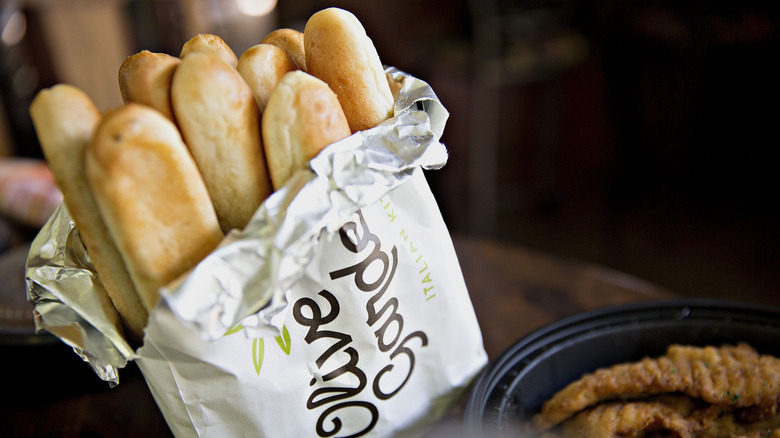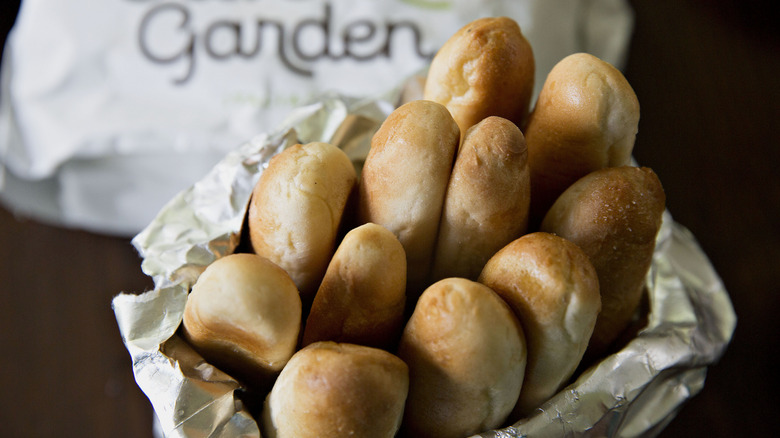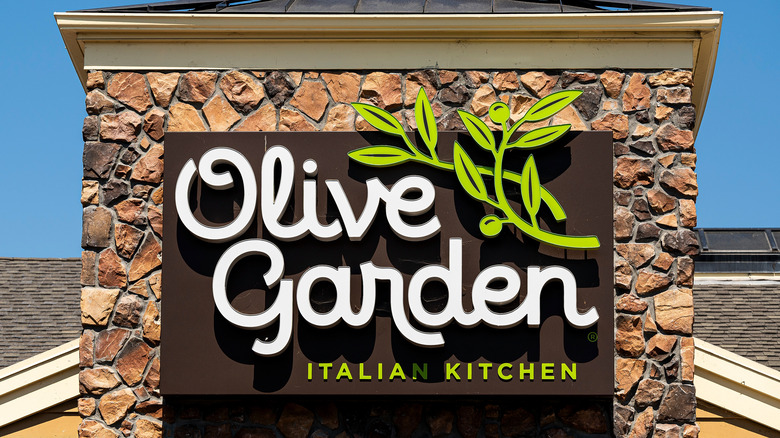That Time Olive Garden Investors Wanted To Axe Unlimited Breadsticks
Olive Garden's breadsticks are an iconic part of the restaurant's experience. The warm, buttery-tasting bread is presented in a basket along with salad before your entree is served, and the bread is replenished once the basket empties.
Just a few years ago, however, some investors suggested that the restaurant should cut back on the number of breadsticks offered to diners. In 2014, investment company Starboard Value dissed the quality of the breadsticks and wanted the chain to serve each table only one breadstick per person unless more were specifically requested.
The existing Olive Garden breadstick policy was for servers to bring each table enough breadsticks for each diner to have one — plus a bonus breadstick in your first basket. This ensures that the restaurant isn't wasting big baskets of bread on smaller parties, so fewer breadsticks go to waste at the end of the meal. When that basket empties, more are brought out. Even so, the Starboard Value investors deemed this policy to be too much for the restaurant to sustain, claiming it contributed to too much food waste.
Investors suggested serving fewer breadsticks
Back in 2014, Starboard Value decided they were unhappy with the way things were run at Olive Garden. Their complaints were so lengthy, in fact, that they filed a nearly 300-page presentation, which was emailed to Olive Garden's executives. The document detailed Starboard Value's dissatisfaction with the chain and claimed that Olive Garden was "in desperate need of a turnaround." The breadsticks had their own section of the document.
Starboard Value stated that the breadsticks were partially responsible for Olive Garden's increased popularity in the 1990s, but that the decrease in quality of the bread over the years meant the chain had failed to retain customers. The company claimed that the breadsticks were less flavorful and even compared them to hot dog buns.
While Olive Garden does bake its breadsticks in each restaurant to heat them up, Starboard Value claimed that the bread would "deteriorate in quality" after just seven minutes of sitting on the table. If they aren't appetizing to guests, diners may not eat as many, and more breadsticks could go to waste, especially if larger quantities of bread are given to each table. This could wind up costing the restaurant extra money due to the uneaten food.
Ultimately, the policy stayed the same. Today, Olive Garden diners can still enjoy unlimited breadsticks while dining at the restaurant.
They also criticized other aspects of the restaurant chain
There were a few other complaints that Starboard Value had with regard to Olive Garden's practices that were also shared in the document. The company claimed that Olive Garden did not provide an authentic Italian experience to diners. To remedy that, Starboard Value wanted servers to encourage diners to order glasses of Italian wines with both lunch and dinner.
The investors also took issue with Olive Garden's changes to menu items. Previously, more authentic entrees included lobster spaghetti and tortellini fizzano. The investors did not approve of newer appetizers on the menu, like the fried lasagna fritta or the Tuscan white bean hummus. Additionally, they were unhappy with the presentation of Olive Garden's meals and stated that the food served in restaurants did not resemble the photos advertised online.
In the end, Olive Garden wound up cutting costs elsewhere and keeping the breadstick policy the same. There may be an alternate reality where Olive Garden limits the number of breadsticks it serves to customers — but we're sure glad we aren't living in it.


